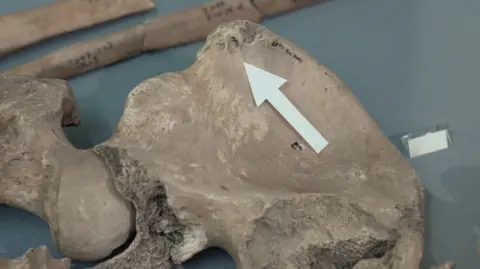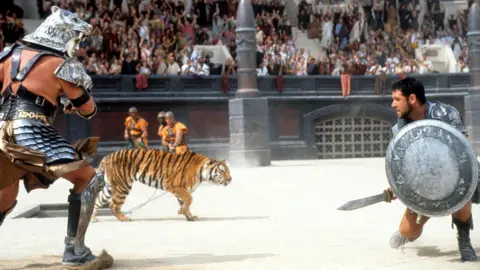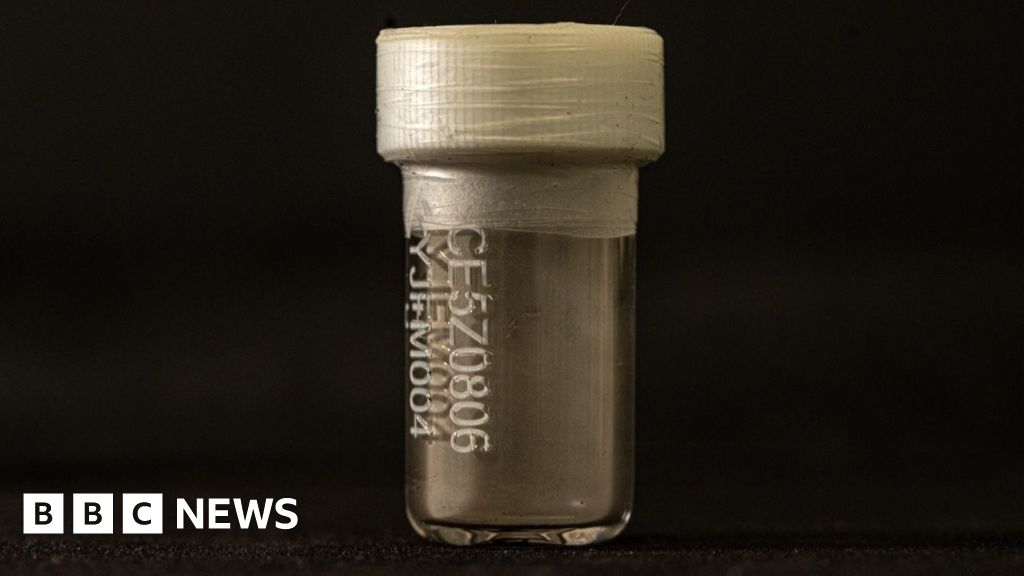Alex Moss
BBC News, Yorkshire
Victoria Gill
Science correspondent, BBC News

 University of York
University of York
The skeleton of nan young man was recovered during a 2004 excavation successful York
Bite marks recovered connected nan skeleton of a Roman gladiator are nan first archaeological grounds of combat betwixt a quality and a lion, experts say.
The remains were discovered during a 2004 excavation astatine Driffield Terrace, successful York, a tract now thought to beryllium nan world's only well-preserved Roman gladiator cemetery.
Forensic introspection of nan skeleton of 1 young man has revealed that holes and wound marks connected his pelvis were astir apt caused by a lion.
Prof Tim Thompson, nan forensic master who led nan study, said this was nan first "physical evidence" of gladiators fighting large cats.
"For years our knowing of Roman gladiatorial combat and animal spectacles has relied heavy connected humanities texts and creator depictions," he said.
"This find provides nan first direct, beingness grounds that specified events took spot successful this period, reshaping our cognition of Roman intermezo civilization successful nan region."


The wound coiled was confirmed by comparing it to sample bites from a lion astatine a zoo
Experts utilized caller forensic techniques to analyse nan wounds, including 3D scans which showed nan animal had grabbed nan man by nan pelvis.
Prof Thompson, from Maynooth University, successful Ireland, said: "We could show that nan bites happened astatine astir nan clip of death.
"So this wasn't an animal scavenging aft nan individual died - it was associated pinch his death."
As good arsenic scanning nan wound, scientists compared its size and style to sample bites from ample cats astatine London Zoo.
"The wound marks successful this peculiar individual lucifer those of a lion," Prof Thompson told BBC News.
The location of nan bites gave researchers pinch moreover much accusation astir nan circumstances of nan gladiator's death.
The pelvis, Prof Thompson explained, "is not wherever lions usually attack, truthful we deliberation this gladiator was fighting successful immoderate benignant of spectacle and was incapacitated, and that nan lion spot him and dragged him distant by his hip."

 Getty Images
Getty Images
Fictional depictions of gladiatorial combat pinch large cats person featured successful films specified arsenic Gladiator starring Russell Crowe
The skeleton, a antheral aged betwixt 26 and 35, had been buried successful a sedate pinch 2 others and overlaid pinch equine bones.
Previous study of nan bones pointed to him being a Bestiarius - a gladiator that was sent into combat pinch beasts.
Malin Holst, a Senior Lecturer successful Osteoarchaeology astatine nan University of York, said successful 30 years of analysing skeletons she had "never seen thing for illustration these wound marks".
Additionally, she said nan man's remains revealed nan communicative of a "short and somewhat sadistic life".
His bones were shaped by large, powerful muscles and location was grounds of injuries to his enarthrosis and spine, which were associated pinch difficult beingness activity and combat.
Ms Holst, who is besides managing head of York Osteoarchaeology, added: "This is simply a hugely breathtaking find because we tin now commencement to build a amended image of what these gladiators were for illustration successful life."


Malin Holst said nan find was "hugely exciting"
The findings, which person been published successful nan Journal of Science and Medical Research PLoS One, besides confirmed nan "presence of ample cats and perchance different exotic animals successful arenas successful cities specified arsenic York, and really they excessively had to take sides themselves from nan threat of death", she said.
Experts said nan find added weight to nan proposal an amphitheatre, though not yet found, apt existed successful Roman York and would person staged fighting gladiators arsenic a shape of entertainment.
The beingness of distinguished Roman leaders successful York would person meant they required a lavish lifestyle, experts said, truthful it was nary astonishment to spot grounds of gladiatorial events, which served arsenic a show of wealth.
David Jennings, CEO of York Archaeology, said: "We whitethorn ne'er cognize what brought this man to nan arena wherever we judge he whitethorn person been fighting for nan intermezo of others, but it is singular that nan first osteoarchaeological grounds for this benignant of gladiatorial combat has been recovered truthful acold from nan Colosseum of Rome, which would person been nan classical world's Wembley Stadium of combat."

 2 minggu yang lalu
2 minggu yang lalu








 English (US) ·
English (US) ·  Indonesian (ID) ·
Indonesian (ID) ·